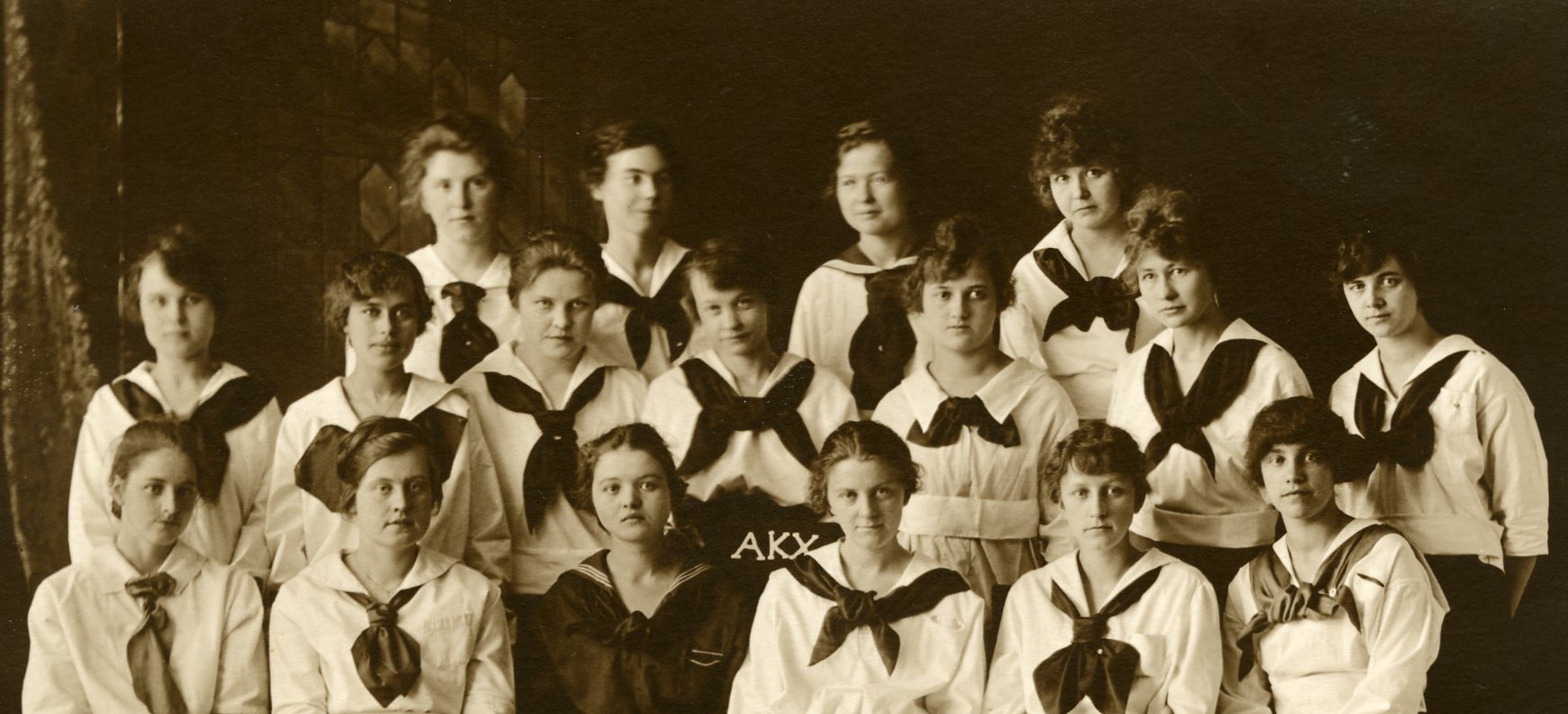 Literary societies were once a common feature at Concordia. Alpha Kappa Chi (AKX) was the first all-female literary society at the college. Even as its focus shifted from literary pursuits to social events to charitable activities, AKX provided a way for Concordia women to engage with their campus and their community for over eighty years. Phi Kappa Chi (PKX) was another major women’s society at Concordia College from 1946 to 1969. Although PKX was relatively short-lived, it provides an interesting look at some of the factors that influenced the rise and fall of women’s (and men’s) societies at Concordia. Literary societies were once a common feature at Concordia. Alpha Kappa Chi (AKX) was the first all-female literary society at the college. Even as its focus shifted from literary pursuits to social events to charitable activities, AKX provided a way for Concordia women to engage with their campus and their community for over eighty years. Phi Kappa Chi (PKX) was another major women’s society at Concordia College from 1946 to 1969. Although PKX was relatively short-lived, it provides an interesting look at some of the factors that influenced the rise and fall of women’s (and men’s) societies at Concordia.
|
 Women’s athletics thrive at Concordia, but the varsity programs currently known and loved did not have their beginning until 1972 and have undergone some dramatic changes in management over the decades, from the Women’s Athletic Association (WAA) and the Association for Intercollegiate Athletics for Women (AIAW), to the National Collegiate Athletic Association (NCAA). Women have fought for the chance to have their talents shine on the court, on the field, in the pool, and more, and while this trend towards gender equality is still ongoing, women’s athletics have nonetheless gained great strides. Women’s athletics thrive at Concordia, but the varsity programs currently known and loved did not have their beginning until 1972 and have undergone some dramatic changes in management over the decades, from the Women’s Athletic Association (WAA) and the Association for Intercollegiate Athletics for Women (AIAW), to the National Collegiate Athletic Association (NCAA). Women have fought for the chance to have their talents shine on the court, on the field, in the pool, and more, and while this trend towards gender equality is still ongoing, women’s athletics have nonetheless gained great strides.
|
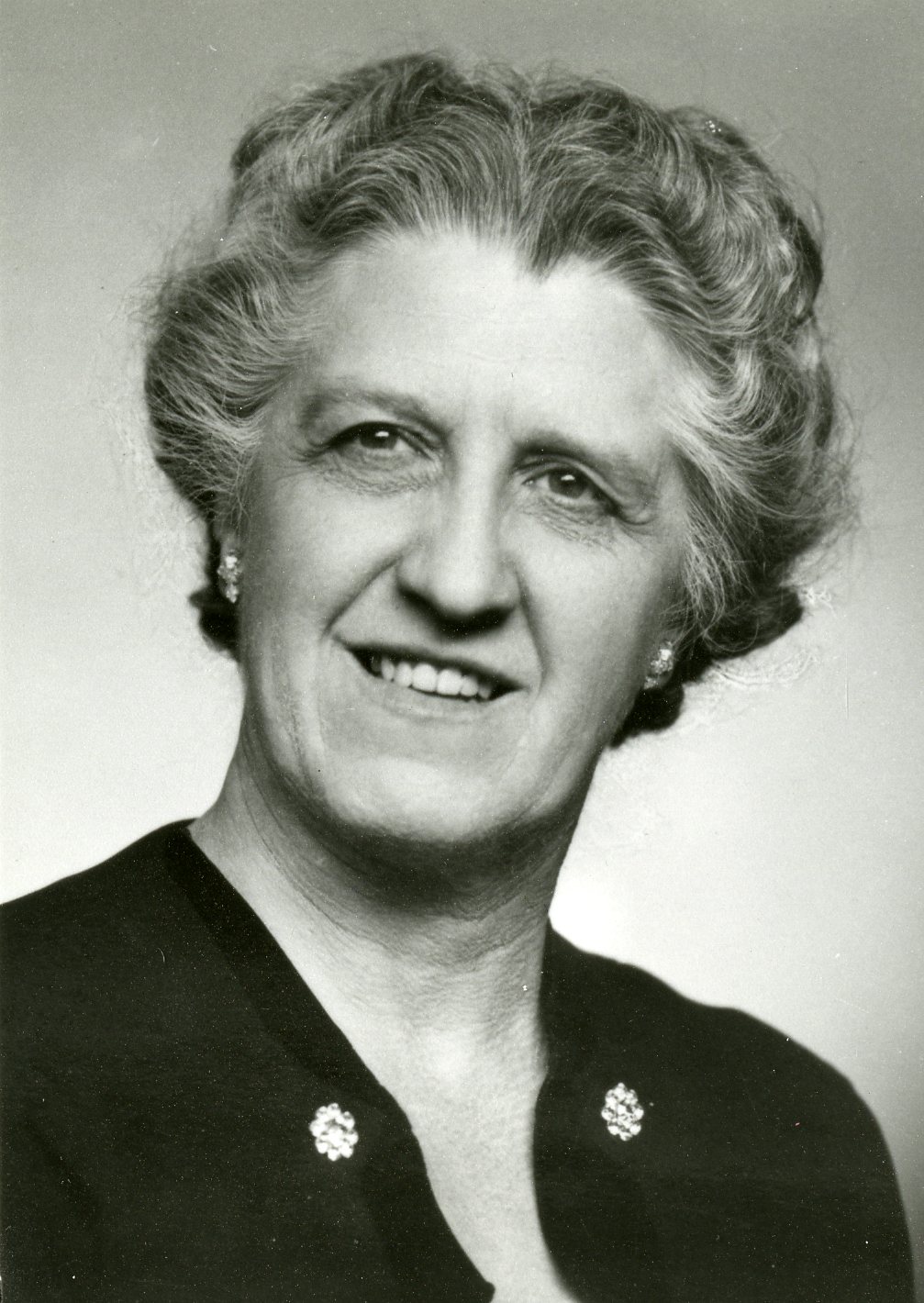 Florence Kruger served as the head of the Home Economics program for much of her thirty-year career at Concordia College. In those thirty years, she made a name for herself, as well as making a lasting impact on the lives of the students that graduated from the program. Florence Kruger served as the head of the Home Economics program for much of her thirty-year career at Concordia College. In those thirty years, she made a name for herself, as well as making a lasting impact on the lives of the students that graduated from the program.
|
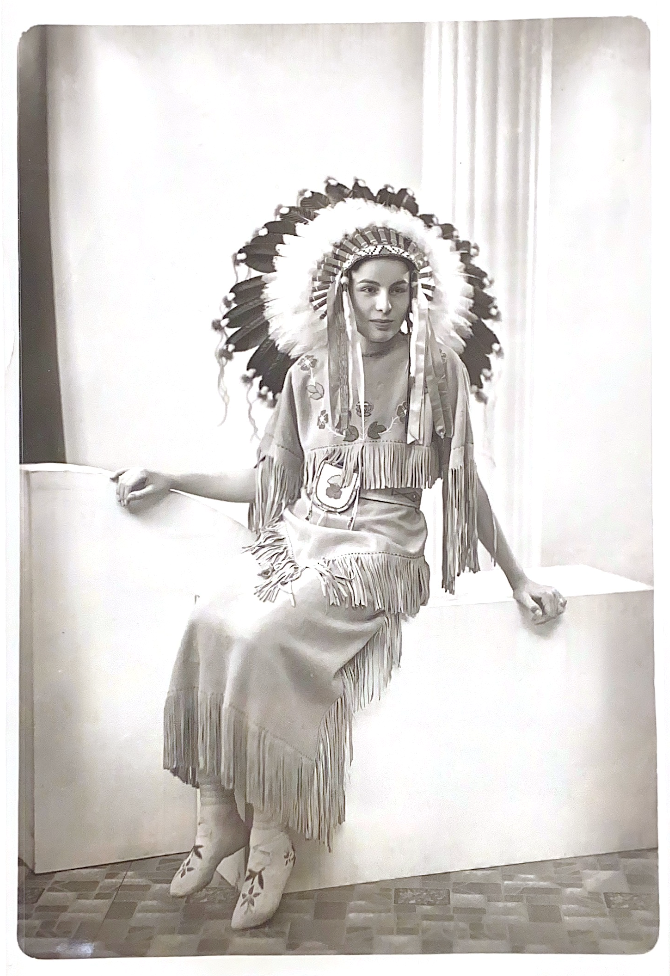 Imogene Baker Dogeagle was an extraordinary Cobber who went on to continue a legacy of excellence following her graduation from Concordia in 1939. During her time at Concordia, she was a very accomplished student, and was involved with many activities on campus. Her most notable accomplishments were achieved during her senior year when she served as the president of the Woman’s Athletics Association, president of the largest women’s dormitory on campus, and was chosen Homecoming Queen. Her election as a homecoming queen was especially momentous, as she was the first indigenous student to attend Concordia, thus making her the first indigenous woman to receive the honor. Imogene Baker Dogeagle was an extraordinary Cobber who went on to continue a legacy of excellence following her graduation from Concordia in 1939. During her time at Concordia, she was a very accomplished student, and was involved with many activities on campus. Her most notable accomplishments were achieved during her senior year when she served as the president of the Woman’s Athletics Association, president of the largest women’s dormitory on campus, and was chosen Homecoming Queen. Her election as a homecoming queen was especially momentous, as she was the first indigenous student to attend Concordia, thus making her the first indigenous woman to receive the honor.
|
Greek society life has been part of Concordia’s campus for many years, despite only one Greek society remaining at Concordia in 2022. Lambda Delta Sigma (LDS) has outlasted other student organizations on campus and has had a deep and complex history since its founding.
|
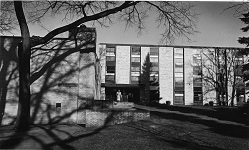 The construction of Park Region Hall in the mid-1950s as a women’s dormitory was part of Concordia’s response to increasing post-WWII student enrollment as well as the availability of government loans. From 1951 to 1955 the college’s enrollment increased by fifty-two percent, with 1354 students registered for the 1955-56 academic year. In addition to providing a new housing option for students, Park Region Hall experimented with a new form of residence governance that was eventually adopted across campus. In the twenty-first century the dormitory remains a place to test new ideas. During the 2016-2017 academic year Park Region was the first Concordia dormitory to offer a sexuality- and gender-inclusive floor. The construction of Park Region Hall in the mid-1950s as a women’s dormitory was part of Concordia’s response to increasing post-WWII student enrollment as well as the availability of government loans. From 1951 to 1955 the college’s enrollment increased by fifty-two percent, with 1354 students registered for the 1955-56 academic year. In addition to providing a new housing option for students, Park Region Hall experimented with a new form of residence governance that was eventually adopted across campus. In the twenty-first century the dormitory remains a place to test new ideas. During the 2016-2017 academic year Park Region was the first Concordia dormitory to offer a sexuality- and gender-inclusive floor.
|
 In 1968, Concordia College opened Hallett Hall, an all-women’s dormitory, along with Erickson Hall, an all-men’s dormitory. The dormitories were built as different sections of one complex. It was the first time since the college’s very early years, when its single building was home to both sexes by necessity, that men and women lived in such close proximity. Hoyum Hall was a former women’s dormitory that became the first building on campus to house both male and female students in 2008. In 1968, Concordia College opened Hallett Hall, an all-women’s dormitory, along with Erickson Hall, an all-men’s dormitory. The dormitories were built as different sections of one complex. It was the first time since the college’s very early years, when its single building was home to both sexes by necessity, that men and women lived in such close proximity. Hoyum Hall was a former women’s dormitory that became the first building on campus to house both male and female students in 2008.
|
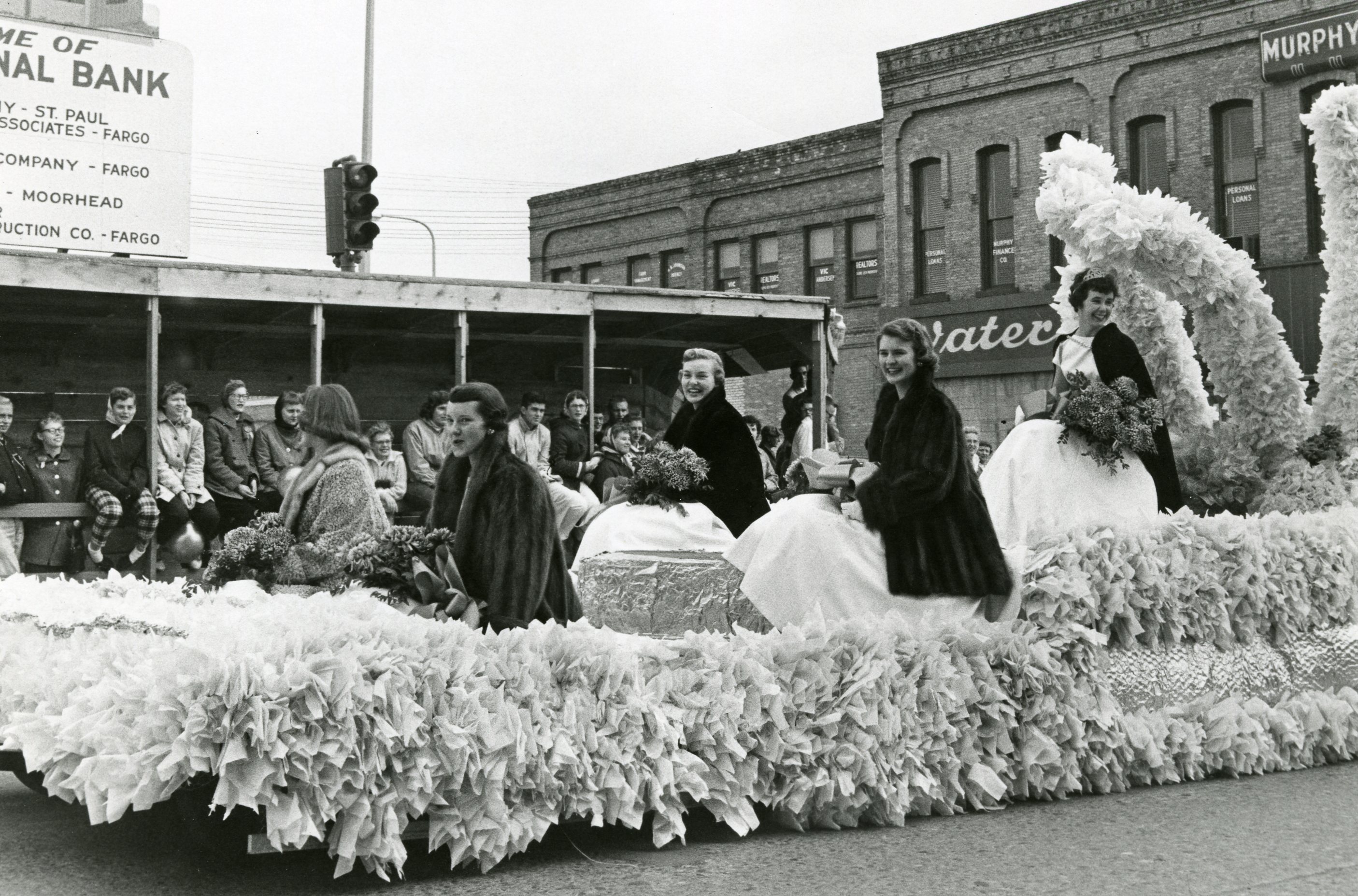 Concordia’s tradition of crowning a homecoming queen began in the 1920s. Student movements and the influence of the 1960-70s society affected the practice. Due to student concerns, the 1974 Homecoming Chairperson Ken Fitzer substituted the tradition of voting for a homecoming queen with the Don Awards, which was a recognition given to four exemplary senior students. The current practice of crowning both a king and queen began during the homecoming festivities in 1977. Concordia’s tradition of crowning a homecoming queen began in the 1920s. Student movements and the influence of the 1960-70s society affected the practice. Due to student concerns, the 1974 Homecoming Chairperson Ken Fitzer substituted the tradition of voting for a homecoming queen with the Don Awards, which was a recognition given to four exemplary senior students. The current practice of crowning both a king and queen began during the homecoming festivities in 1977.
|
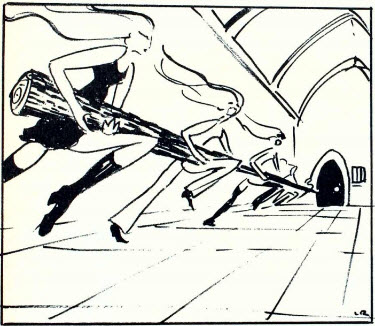 Until the early 1970s, Concordia College imposed restrictive rules and strict regulations pertaining to women’s curfews and lights out. The questioning of authority surrounding the Vietnam War and the feminist movement helped to empower female Cobbers to advocate for their personal freedom. Through a variety of strategies such as demonstrations, lobbying, and expressing opinions in the campus newspaper, women studying at Concordia gained personal freedom and independence when Women’s Hours were eliminated in 1973. Until the early 1970s, Concordia College imposed restrictive rules and strict regulations pertaining to women’s curfews and lights out. The questioning of authority surrounding the Vietnam War and the feminist movement helped to empower female Cobbers to advocate for their personal freedom. Through a variety of strategies such as demonstrations, lobbying, and expressing opinions in the campus newspaper, women studying at Concordia gained personal freedom and independence when Women’s Hours were eliminated in 1973.
|
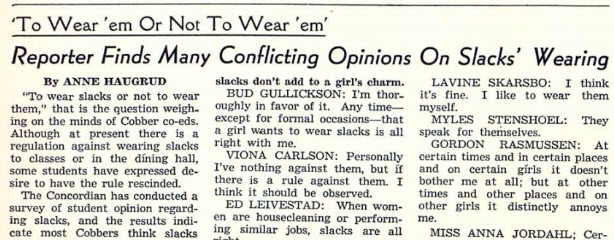 Double standards in the regulation of student conduct at Concordia College placed the liberties of women below those of men. Dress codes and smoking policies in particular explicitly treated female students differently than male students. A combination of student action as well as changing social views brought an end to these sexist differences in regulation over the course of the 1960s and 1970s. Double standards in the regulation of student conduct at Concordia College placed the liberties of women below those of men. Dress codes and smoking policies in particular explicitly treated female students differently than male students. A combination of student action as well as changing social views brought an end to these sexist differences in regulation over the course of the 1960s and 1970s.
|
 Literary societies were once a common feature at Concordia. Alpha Kappa Chi (AKX) was the first all-female literary society at the college. Even as its focus shifted from literary pursuits to social events to charitable activities, AKX provided a way for Concordia women to engage with their campus and their community for over eighty years. Phi Kappa Chi (PKX) was another major women’s society at Concordia College from 1946 to 1969. Although PKX was relatively short-lived, it provides an interesting look at some of the factors that influenced the rise and fall of women’s (and men’s) societies at Concordia.
Literary societies were once a common feature at Concordia. Alpha Kappa Chi (AKX) was the first all-female literary society at the college. Even as its focus shifted from literary pursuits to social events to charitable activities, AKX provided a way for Concordia women to engage with their campus and their community for over eighty years. Phi Kappa Chi (PKX) was another major women’s society at Concordia College from 1946 to 1969. Although PKX was relatively short-lived, it provides an interesting look at some of the factors that influenced the rise and fall of women’s (and men’s) societies at Concordia. 






